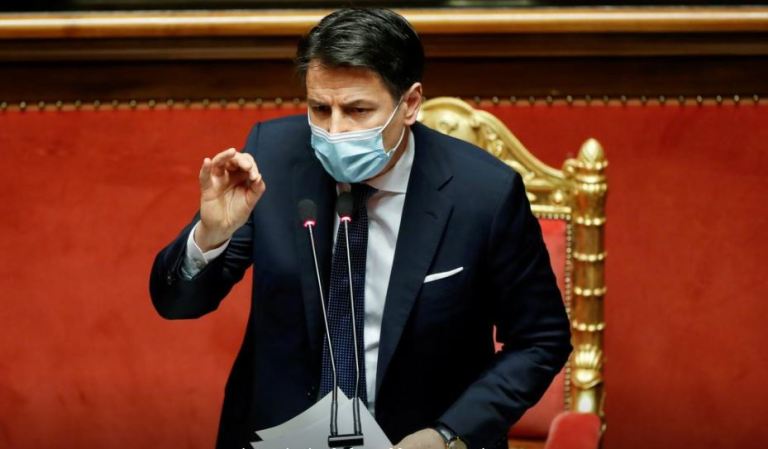Foreign News
Italian Prime Minister Giuseppe Conte Resigns

Italian Prime Minister, Giuseppe Conte, went to see the head of state on Tuesday to hand in his resignation.
This is as he hopes to be given the opportunity to try to put together a new coalition and rebuild his parliamentary majority.
Conte lost his absolute majority in the upper house Senate last week when a junior partner, the Italia Viva party, headed by former premier Matteo Renzi, quit in a row over the government’s handling of the coronavirus crisis and economic recession.
Efforts to lure centrist and independent senators into the coalition ranks to fill the hole left by Renzi have met little success.
This left Conte with no choice but to resign and open a formal government crisis that will give him more time to find a deal.
President Sergio Mattarella is expected to accept his resignation and hold rapid consultations with party leaders to test the political waters.
If he thinks Conte might get the necessary backing to pull together a new administration, he will give him a few days to try to finalise a deal and draw up a new cabinet.
However, if he fails, Mattarella will have to come up with an alternative candidate deemed capable of piecing together a workable coalition.
If all else fails, he will have to call elections, two years ahead of schedule.
Conte is a lawyer with no direct political affiliation but is close to the largest party in parliament, the anti-establishment 5-Star Movement.
He first came to power in 2018 after 5-Star formed an unexpected coalition with the far-right League.
When that pact unravelled a year later, he stayed on as head of a new administration involving the 5-Star and leftist parties.
The deepening crisis is playing out against the backdrop of the coronavirus pandemic, which has killed more than 85,000 Italians.
Italy has the second-highest death toll in Europe after Britain and the sixth highest in the world.
The health crisis has triggered the worst recession in Italy since World War II and the government has been struggling to draw up a plan on how best to spend some 200 billion euros ($240 billion) of European Union funds to help the economy recover.
-

 News4 days ago
News4 days agoNurudeen Islamic Mission Mourns Death Of National Leader, Alhaji Abdulazeez Orelope
-

 News4 days ago
News4 days agoSafety Of Commutters: Gov Adeleke Flags-off Profiling Of Transport Operators
-

 News1 day ago
News1 day agoWe Created Odun Olodumare To Erase Generational Curse — Oluwo Of Iwoland
-

 News1 day ago
News1 day agoAppeal Court Did Not Nullify MC Oluomo Election – NURTW




